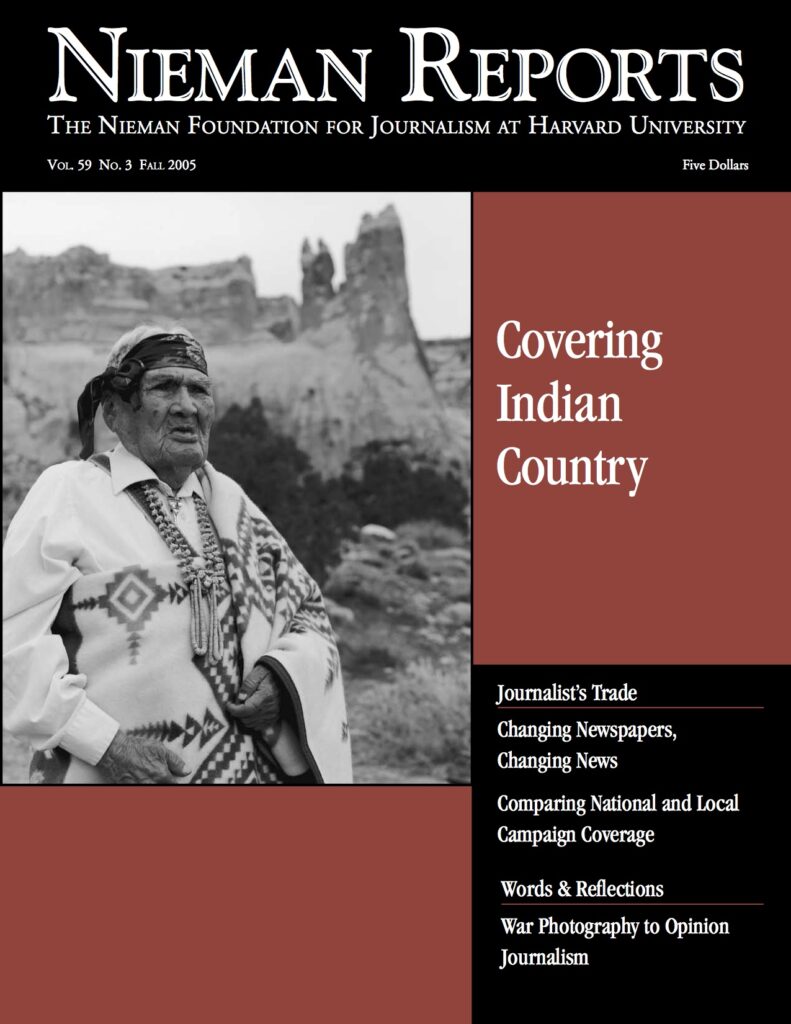ISSUE
Fall 2005

Covering Indian Country
As a young reporter at The Rapid City Journal, Tim Giago was seldom allowed to cover stories on the nearby Pine Ridge Indian Reservation where he was raised. As one editor told him, being Native American meant he could not be objective in his reporting. In 1981 he moved back to the reservation to start a community newspaper called the Lakota Times. At that time it was the only independently owned weekly Indian publication in the United States. In this collection of stories, Native Americans and non-natives who tell stories about the lives of Indian peoples talk about their obligation to fairness and the skills they need to live up to this responsibility.